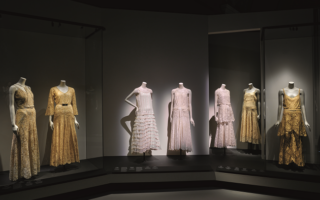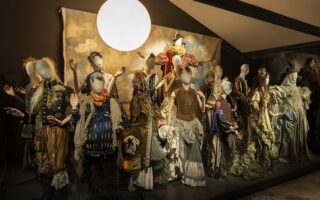Hermès: A Family Affair
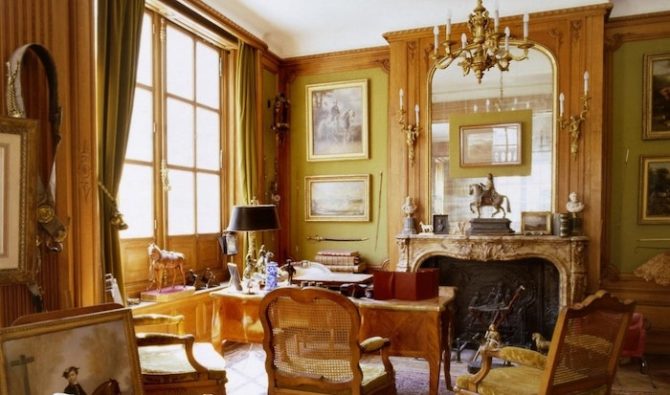
Within the Hermès family the words luxury and profit are never spoken—as if even pronouncing them would be incredibly vulgar, almost indecent. They use the word elegance, of course, but mostly they talk about work well done, about passing on traditions, about time and patience. And about discretion.
Since the surprise raid on the company by tycoon Bernard Arnault last fall and winter, when Arnault’s LVMH progressively announced that it had acquired first more than 17% and then more than 20% of Hermès’s stock, certain family members have even become mute. At Hermès headquarters on the rue du Faubourg Saint Honoré, the possible takeover attempt is perceived as a true clash of cultures: on one side an implacable giant of finance; on the other, “an artisan attached to esthetic and ethical values”. “Hermès, a contemporary artisan” is actually the theme common to the company’s different departments, the leitmotif for 2011.
But that picture needs a little retouching: Hermès is something quite different than just a large version of a small family enterprise. Last year its turnover reached more than €2.4 billion, an increase of an astounding 25.4%. The exceptional growth owes a great deal to the genius of Jean-Louis Dumas, who died in May 2010. Taking over as head of the company in 1978, and with the help of his cousins, he re-energized the silk, leather and ready-to-wear sectors; launched new divisions for timepieces and porcelain; acquired the prestigious boot maker John Lobb, the cristallerie Saint-Louis and the goldsmith and tableware manufacturer Puiforcat; and strengthened the worldwide distribution network. A charismatic manager (“You might as well call him God!” sighs a former employee), he built the fortunes of the fifth, sixth and seventh family generations, multiplying the company’s worth by a factor of 20 in less than 30 years.
(Below: a Hermès window display showcasing their bag collection for Fall 2011)
The Hermès brand is immediately identifiable by its logo, a horse-drawn carriage—precisely, a light calèche called a duc—and its orange boxes with brown ribbons. The saga of those signatures began with the arrival in Paris of Thierry Hermès. Born into a Protestant family on the left bank of the Rhine, in Krefeld, Germany, the 20-year-old Thierry was a gifted leather worker, and he dreamed of conquering the French capital. In 1837 he set up a workshop to make harnesses and saddles in the district of the grands boulevards frequented by le Tout Paris, who felt they owed it to themselves to have the most beautifully outfitted carriages in town. “Our first client is the horse, the second, the horseman!” recalled Jean-Louis Dumas with deadpan humor.
Strongly attached to its roots, Hermès has never stopped selling equipment for horses and riders, producing some 500 saddles a year in the fifth-floor workshop of the ultrachic flagship store at 24 rue du Faubourg Saint Honoré. One of the latest models is the Talaris saddle, from the Latin talaria, meaning winged sandals, the symbol of the Roman god Mercury, and the Greek Hermes. A marvel of the latest technology, designed for jumping, the Talaris was launched at the first edition of the Saut d’Hermès, an international show jumping competition organized for the second time in April 2011 under the nave of the Grand Palais in Paris—a competition involving the 35 best show jumpers in the world. Under the leather exterior with its impeccable finishing, the Talaris’s “tree”, or base structure, is not made of wood and steel but of injected thermoplastic, carbon fiber and titanium, and all of its parts are made to measure. Thierry Hermès would have loved it.
Thierry was succeeded by his son Charles-Emile Hermès, who chose the new address in the Faubourg Saint Honoré, not far from the Elysée Palace, in 1880. Under the name of Hermès Frères, from 1902 to 1919 his two sons Adolphe and Emile-Maurice added to the already impressive client list the name of Russia’s Czar Nicholas II. While older brother Adolphe, who was rather timid, dreaded the arrival of the automobile, the younger Emile-Maurice, an accomplished sportsman, feared nothing. He bought out his brother’s shares and found himself alone in 1920 at the head of the family firm. A good Protestant, he believed firmly in the virtues of hard work and the authenticity of the handmade; he attended church every Sunday and devoted an hour every morning to physical exercise while listening to the radio program La Voix de l’Espérance, the Voice of Hope.
He was also an aesthete, a passionate collector and an entrepreneur gifted with rare flair. Emile-Maurice had three sons-in-law who became his business partners: Robert Dumas, Jean-René Guerrand and Francis Puech. Their descendants now hold nearly three-quarters of the group’s capital and remain effectively very involved in the company. Today the Dumas branch of the family fills most key positions.
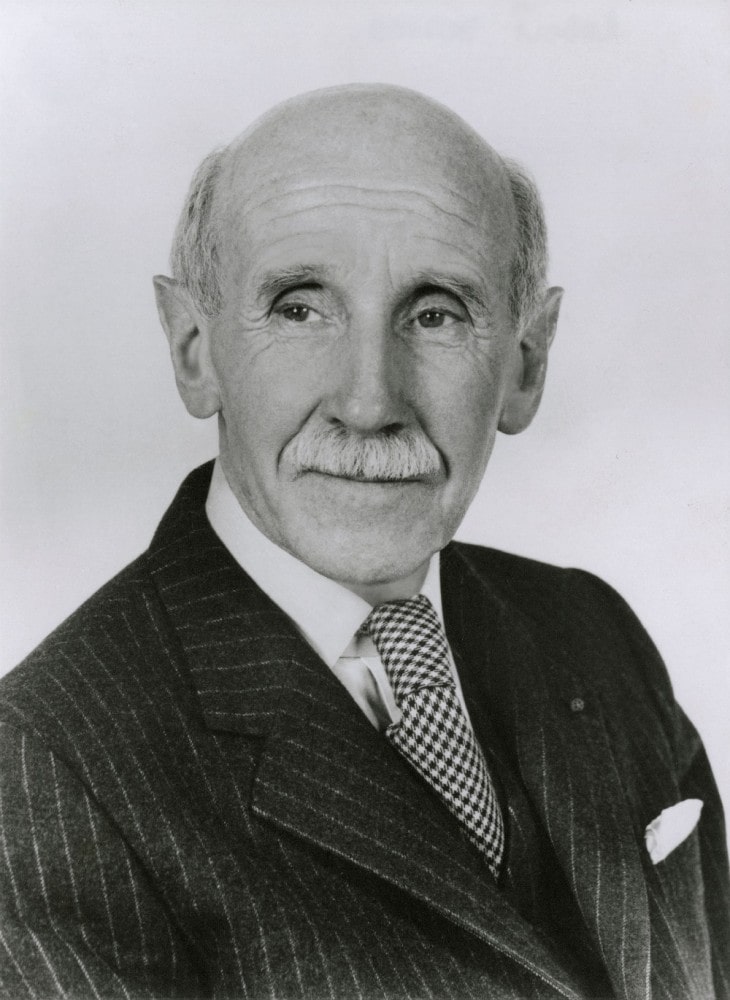
Robert Dumas. Credit © Archives Hermès
Emile-Maurice’s office is now a small museum, occasionally opened for solemn visits by notable clients and the Hermès creative team. It has been filled, over several generations, in the manner of a cabinet of curiosities. A modern extension, now under construction, will house drawings, paintings, tools, books and travel souvenirs. “It’s the soul of the company that you find here,” says Stéphane Laverrière, a member of the firm’s heritage conservation team.
In the oak-paneled office with its almond-green velvet drapes, a copper-trimmed walnut trunk made by cabinetmaker and silversmith Martin-Guillaume Biennais for Jean-Jacques Régis de Cambacérès, Napoleon I’s arch-chancellor, stands next to the rocking horse of the little Imperial Prince Eugène, son of Napoleon III. There’s also the severe black riding habit of Emile-Maurice’s wife, Julie Hermès, an 18th-century phaeton, a Moroccan parade saddle and a vial of neat’s foot oil—excellent, it seems, for nourishing leather. A glass case displays a hunting knife with a porcelain handle and a lorgnette covered in green shagreen—exquisite objects lent to Sofia Coppola for the filming of Marie Antoinette. Perhaps most surprising is a zipper that looks like a metal snake. “On a business trip to the US, Emile brought back a zipper, and he was soon using them on leather goods and clothing. The Duke of Windsor was the first to wear a zippered jacket,” notes Laverrière. Emile also added handbags, luggage, and travel, sport and automobile accessories to the firm’s more traditional products, along with silk scarves, belts, gloves and jewelry.
Today Hermès stylists visit the Proustian office-museum in search of inspiration. An extraordinary antique parasol covered with pheasant feathers recently engendered the Ombrelle Magique scarf, and an inkwell made from a horseshoe was the source for the Centaur ring.
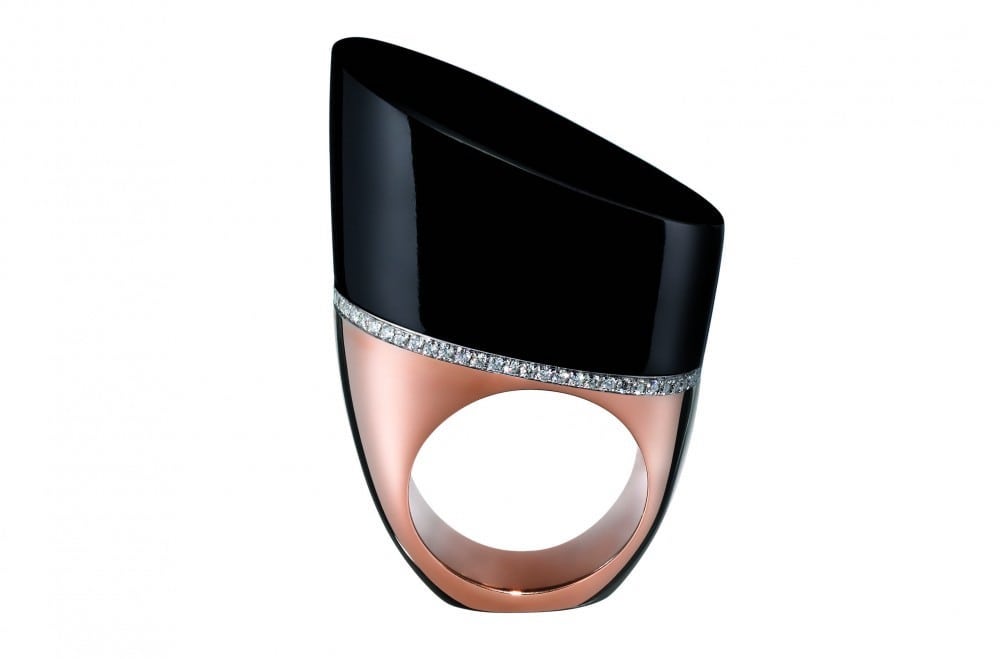
The new Centaur ring. Credit © Courtesy Hermès
Silk and Scents
In the 1930s, it was Robert Dumas’s fertile imagination that produced several now-legendary Hermès creations, including the classic handbag later known as the Kelly and the Chaîne d’Ancre (anchor chain) bracelet. In 1937 Hermès first started printing silk twill scarves. Simply called carrés, the 28- and 35-inch silk squares with hand-rolled edges defied fashion trends and became lasting icons. Later they broke out of the BCBG mold and were reinterpreted in explosions of color, as in the best-selling, embroidered and sequined 1957 Brides de Gala, or Gala Bridles. Some of the “squares” have also been reconfigured into triangles or diamond shapes, and designed by artists including Hilton McConnico, Ding Yi and Daniel Buren, who framed his “photo-souvenirs” scarves with his lively signature stripes.
When Emile-Maurice died in 1951, Robert Dumas took up the reins, working closely with his brother-in-law Jean-René Guerrand, who developed the perfume and haute couture lines. The Hermès tie, an enduring status symbol, was “invented” during their regime. Legend has it that the idea was suggested by the director of the Cannes branch, as a “favor” for clients of the nearby casino…
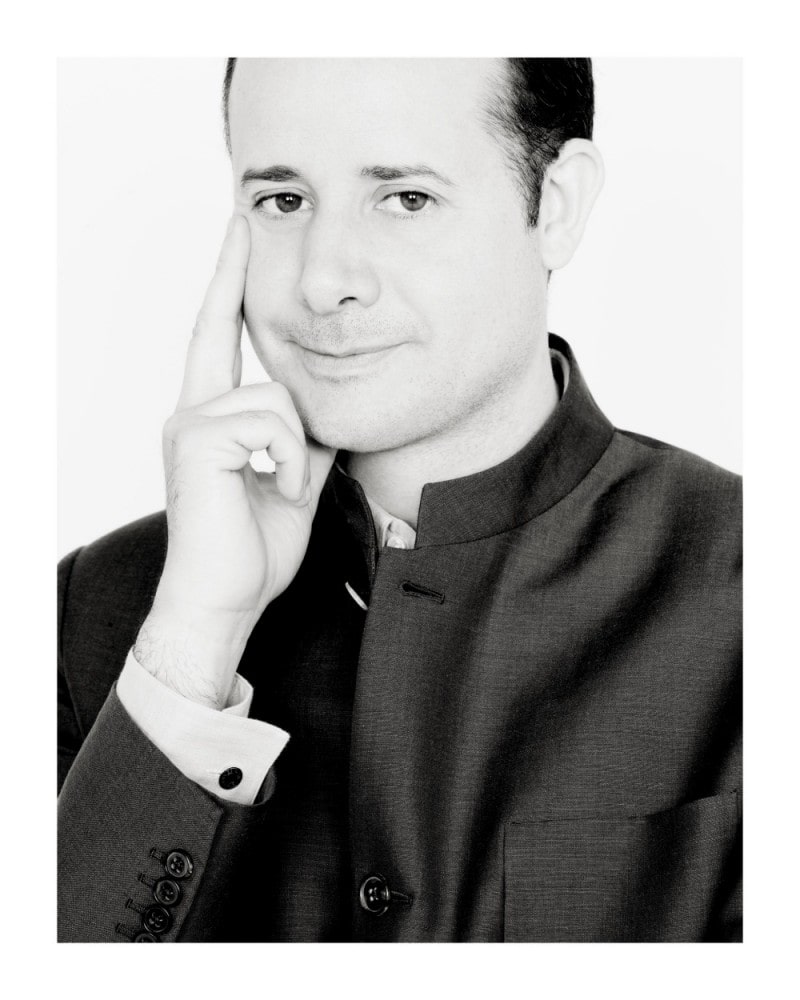
Pierre-Alexis Dumas. Credit © Pierre Even
After succeeding his father Robert in 1978, rejuvenating the company and guiding it securely into the 21st century, Jean-Louis Dumas became ill and resigned in 2006. He was replaced by Patrick Thomas, manager of Hermès International and the first CEO who was not a family member. Jean-Louis’s son, Pierre-Alexis Dumas, and his niece, Pascale Mussard, became artistic co-directors. Mussard has since stepped back, and launched “petit h”, described as “a recycling workshop, for giving a second life to discarded materials and products”. Petit h has put out an unusual and playful catalog advertising pop-up sales.
General Artistic Director Pierre-Alexis Dumas, nicknamed PAD, is now, at 44, the guardian of the temple. “Jean-Louis was warm, sparkling. A born communicator. His son conceals a real ambition and a good dose of fantasy under a more distant exterior,” confides someone close to him. A graduate in visual arts from Brown University who directed several overseas branches, Dumas believes his role is “to let talents sing”. Among the considerable talents who now surround him: Couli Jobert in leatherwork and saddles, Bali Barret in silk, Véronique Nichanian in menswear, Hélène Dubrule in home decor and Pierre Hardy in shoes and jewelry. And in ready-to-wear, after Jean-Paul Gaultier, there is now Christophe Lemaire.
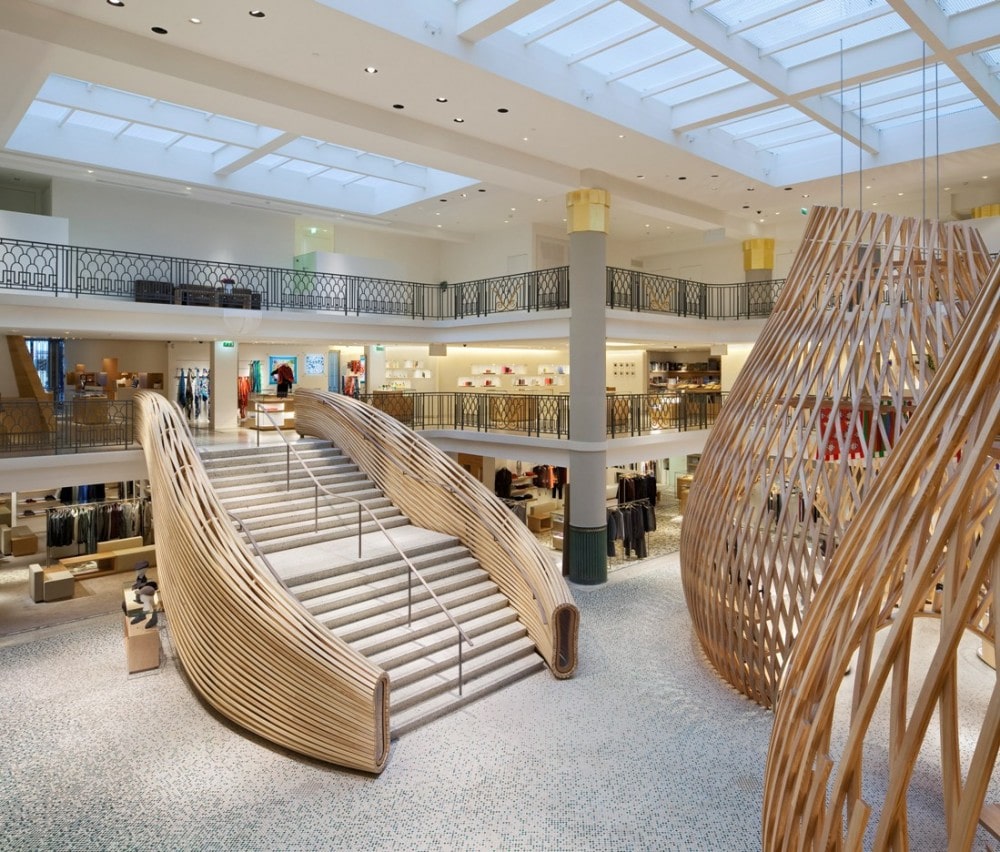
The new Hermès boutique on the Left Bank in Paris. Credit © Michel Denancé
“We are in a permanent creative construction zone,” Pierre-Alexis said to the Swiss magazine Artpassion. “The very essence of Hermès lies in the quest for perfect functionality, coherence, and savoir-faire transmitted from generation to generation by artisans de métier.” The love of fine workmanship, of objects that will be kept for a long time, is an often-repeated credo in the family: “My grandfather used to say that the real rarity is a thing that can be repaired.”
In opening the new Rive Gauche space in Paris, in the superb former indoor swimming pool of the Hôtel Lutetia near Saint Germain des Prés, Hermès took a chance, and succeeded, with a major new project. The immense space was redesigned by Denis Montel, head of the RDAI agency founded by the late architect Rena Dumas, wife of Jean-Louis and mother of Pierre-Alexis.
The new store’s three open-work sculptural structures in woven oak became the talk of the town. The entire range of Hermès goods is presented, but the star attraction is the new home-decor line, which occupies some 40% of the space with wallpapers, fabrics, re-editions of Jean-Michel Franck furnishings and sublime rugs designed by American artists Janis Provisor and Brad Davis. Right now home decor only represents 5% of the company’s revenue, but the desire to expand it is obvious. This year, for the first time, Hermès participated in the annual Milan Furniture Show, with a well-received collection of contemporary furniture produced in collaboration with Italian designers Enzo Mari and Antonio Citterio.
Since 1992, Hermès accessories—including handbags whose prices can soar to over €25,000 each—have been designed and produced at the company’s Pantin facility, in a working-class suburb northeast of Paris. All the offices and ateliers of this handsome five-story glass building open onto a luminous central atrium. Six hundred people work in the building, including 400 artisans.
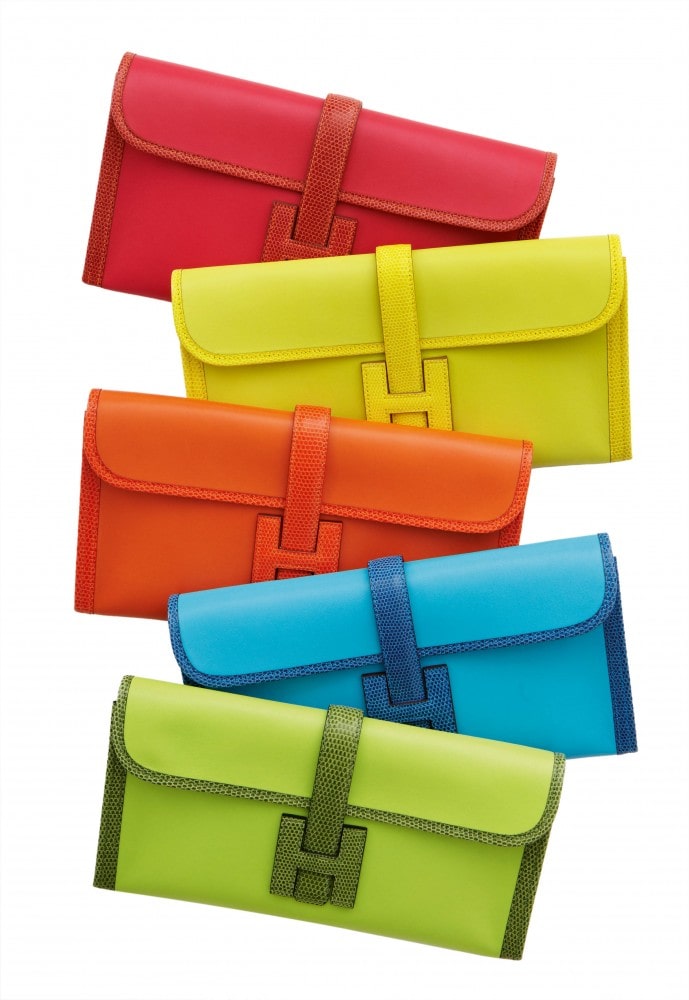
Colorful Hermès clutch bags. Credit © Courtesy Hermès
A veritable Fort Knox, the crocodile-skin atelier is the stuff of dreams. In the storeroom are stacks of uncut skins of Nile and saltwater crocodiles in shades of bougainvillea and Scheherazade pink, Mykonos blue and lagoon green, destined for richissime clients. In a neighboring workshop, the click of tools accompanies the practiced gestures of stitching and polishing. Each piece is entirely assembled—and signed—by a single artisan. And the artisan, more often than not, is a woman. In early 2013 the Pantin facility is slated to double in size, to more than 300,000 square feet, primarily to accommodate the ready-to-wear division.
In the US, Charles of the Ritz handles Hermès fragrance distribution—Calèche was launched in 1961, Equipage in 1970. The brand’s first stand-alone New York boutique opened on 53rd Street in 1930, and in February 2010 the first Hermès store dedicated solely to men was inaugurated on Madison Avenue, facing the Maison Hermès across the street. And as of February 2011, there’s a pioneering new Hermès shop on Broad Street, in Lower Manhattan. The horse-drawn calèche is in full gallop.
View this post on Instagram
DREAM—WE’LL DO THE REST
A list of just a few of the extravagances born in Hermès’s special order workshop resembles an inventory in the poetic style of Jacques Prévert: a little wheelbarrow covered with stitched saddle leather, given by the Duke of Windsor to the Duchess for her birthday. (She kept her perfumes in it.) A lambskin-covered case for a single apple, in Granny Smith green color, for an apple-mad Italian client. Three guitar cases—dark brown crocodile, gold cowhide and denim—for an unnamed rock star. A complete outfit, from silk scarf to Bolide handbag, for Barbie’s 26th anniversary. A chewing gum case. A Birkin bag as a memento, made from a mainsail that had been covered with graffiti during a party. Recently the company has also customized a helicopter, a Smart car and a Bugatti Veyron.
LVMH vs. Hermès
Before announcing late last year that it had acquired first 17.1% and then more than 20% of shares in Hermès, LVMH already held just under the limit of 5% that would oblige a declaration of its holdings. (French law requires a public declaration each time shareholdings in a company exceed 5, 10 and 15%.) LVMH avoided making such declarations by using intermediaries—in this case three banks—to buy financial instruments known as equity swaps, which were converted into shares at the last minute. The French securities regulator, the Financial Markets Authority, has decided to open an inquiry. (Such a maneuver would be impossible under US law.) Although LVMH Chairman Bernard Arnault has insisted that its silent acquisition of 20.21% is purely an investment and that LVMH has no desire to seek a board seat or a takeover of Hermès, management at Hermès regards the “intrusion” as hostile. Hermès has created a controlling family holding company to fend off any potential LVMH takeover attempt.
Originally published in the June 2011 issue of France Today
View this post on Instagram
Let our creative team introduce you to the new Hermès beauty line. #Hermes #HermesBeauty #24colors
Share to: Facebook Twitter LinkedIn Email
Leave a reply
Your email address will not be published. Required fields are marked *

